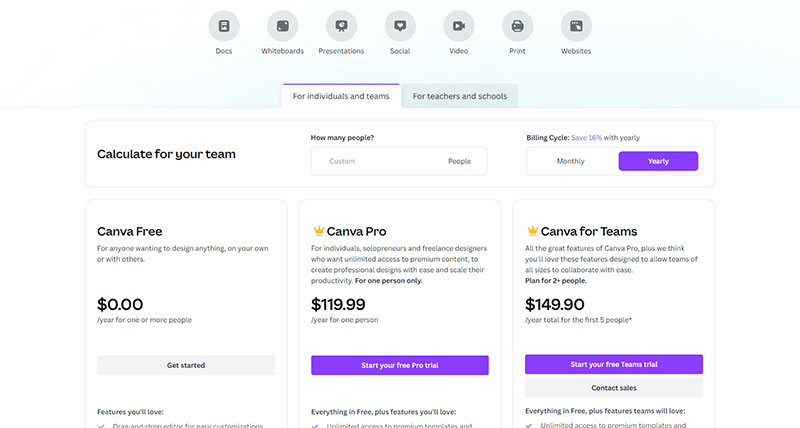It’s 2015 and Quixey, a “search engine for apps” startup, has just raised a $60 million in its latest investment round. The future looks bright for this Mountain View, CA company, and some have even dubbed it the next Google.
Many experts would say that Quixey is now past the make-it-or-break-it point. Backed by leading venture capital firms including US Venture Partners, WI Harper Group, and Innovation Endeavors as well as Chinese behemoth Alibaba, Quixey appears to be on track for a long, profitable course of operation.
In reality, Quixey is about to belly-flop. Just several months after the $60 million investment, certain key executives will leave Quixey due to missed revenue targets. Only months later, in early 2017, Quixey will shut down.
—————
The story of Quixey, which had all the hallmarks of the next Google, shows us that getting funding is not all that matters. While it certainly keeps the heart of your organization pumping, there are many steps before and after you get the funds that matter just as much.
Gary Vee says that cash is the oxygen of a startup company. Without it, you will have a hard time sustaining your business, expanding your reach, and achieving your goals, no matter how revolutionary your app is.
But even when you’ve secured funding for your brainchild, the fight is far from over. In fact, many startup founders make the mistake of looking at app funding as a one-time thing.
The truth is, securing app funding is a continuous effort. It’s not just one pitch in front of a roomful of investors. It’s an ongoing process that combines market research, branding, product improvement, nurturing partnerships, and more.
So in today’s post, we’ll walk you through the essential steps you need to take so that when the time comes for signing that check, you have already done everything to secure funding for your mobile app.
We will not be focusing on quick wins, but on long-term, fail-safe ways to get funds.
We believe that’s the only sound way to earn trust and financing, and so do investors.
Factors that an app needs to have to get funding
To understand what it is that makes investors put their money into one app and not the other, it is crucial to come to terms with this reality: there are a number of pieces that need to fall into place in order for your app to get funding.
A lot of calculation needs to be done, on top of just polishing up your pitch deck. You need to take stock of market trends and size and analyze your management.
The good news is that you are in control of this.
According to Mark Suster, a venture capitalist at Upfront Ventures, the largest venture capital firm in Los Angeles, investors look for four things in a startup before investing.
These are:
Momentum
While definitions vary, momentum is essentially about “thinking down the line” rather than jump-starting investors only when you need the funds.
It means that if you have identified investors you think are a good fit for your app, you should see them early and often. You should make the effort of meeting with them regularly, without taking too much of their time, but always piquing their interest and showing them your commitment to the app.
After all, if they can’t see the commitment on your end, why should they bother investing in it themselves?
Management
The people who run the startup are often the deal-breaker.
Investors are more likely to invest in an app backed by people with experience, industry experts, or people who have a good reputation for their management skills.
Of course, this can be difficult to assess, so your job is to underline the expertise of your management team. Present the bio slide early on in your presentation, as this will help investors evaluate your app through the prism of your management team’s expertise.
Market size
VCs are looking to invest in apps whose markets have the potential to grow big. So before meeting with investors, make sure to do some baseline calculations about the potential of market growth, revenues, etc.
Avoid talking about early exists and quick flips, as these can put serious investors off, and you could easily squander your chances of securing the funds.
Money
According to Mark Suster, it’s important to keep in mind that most VCs will want to own between 20 and 25% of your company, minimum, if they’re investing alone.
They might be willing to cut back to 15% if they are co-investing with someone else, but the majority of VCs won’t settle for a single-digit percentage of company ownership.
It’s good you know this because you also need to establish how much ownership you are willing to give away.
Become an expert in your industry before trying to get funding
The key to securing app funding is thorough preparation and patience.
While meeting with investors and pitching your product is undeniably exciting, the adrenaline rush from all the hustling can often blindside founders from focusing cool-headedly on key numbers and facts.
And the truth is that no matter how revolutionary your app is, without solid supporting facts, it is difficult to convince investors to give you the money.
Increase your chances of getting the funds by dedicating time and research to factors such as:
- price analysis
- trends in the market — What kind of business models and apps are becoming popular? What is the market size? How much is it going to grow? Are there any threats?
- marketing plans — How do you plan to market your app? Through which channels? How are you going to acquire leads? How are you going to convert them into paying customers?
- SWOT analysis — What are your strengths, weaknesses, opportunities, and threats?
- location analysis
- competitive analysis
- target market analysis
- domestic/international competitors
You should go pitching to investors only after you’ve collected all this information.
Another useful tactic is to ask yourself the questions investors would typically ask you.
Do research and anticipate the kind of questions VCs might have. It is essential that you, as the founder and creator of the app, know the answers. Some of these questions are:
- How did you get the idea for the app?
- What exactly is your app and what does it do?
- How will it fit into a crowded marketplace?
- Can your app differentiate itself from the competition?
Don’t focus entirely on the product, work on branding too
Now that we have looked at the importance of focusing on your app, it’s time to consider another important factor that determines whether you will get the funding or not: branding.
Branding is just as important as the app itself.
Why?
Because branding is the promise you give to your customers. It shows what your app is and how it will help solve users’ problems.
This helps create traction, or get people talking about your app, but it will also send a positive signal to investors that you are consistent and true to your words. Which, in turn, will make it easier for them to trust you with their funds.
Branding can help you tremendously in the early stages.
First, it helps build customer loyalty beforehand, when customers are more likely to get attached to the brand, or the promise, then the app itself. Afterward, it’s what the app does for them that will delight them.
Branding also gets your product more easily recognized. It creates consistency in tone, messaging, quality, and even design, and it helps attract customers. And whatever attracts customers will have more chances of attracting investors.
Finally, branding will help your app appear more professional. The unity among various aesthetic dimensions of your app (such as the interface design, messaging, colors, and voice) gives the impression of commitment and dedication.
It’s a physical proof of what you are pitching to investors when you meet them, and it’s more difficult to say no to.
Funding requires a user base — here is how to create one
As we mentioned previously, investors will be looking for some proof that your app is worth investing in, and this proof creates traction.
Market research and projections are useful, but the best way to show your app will take off successfully is a user base.
Now, creating a user base in the early stages of your app can be challenging. You are not yet a household name that users flock to. Instead, you need to hurl towards them.
However, there are a number of ways you can successfully build a customer base that can help you get the investment.
1. Give a demo of the new product to trial users
At this point, you are disseminating your app to as many users as possible — within the targeted market segment, of course. This helps your app catch on, and if it delivers on the promise, these trial users will become your advocates, recommending your app to new trial users.
2. Repeat customers
Now that your app has struck a chord with some of your trial users, they will become repeat customers.
You should focus heavily on catering to their needs and learning as much as you can about their experience with your app. Try to identify pain points and friction points in their customer journey.
Establish a continuous conversation with them, as they will be a strong signal to your investors.
The more repeat customers you boast, the easier it will be to sway investors’ decisions in your favor.
3. Media reporting
Often startup founders wait for their app to get past a significant threshold and only then make pitches to already-busy tech journalists.
And this is often too late. Why?
The question you need to ask is, why should these journalists invest their time in reporting about you?
Again, just as with investors, nurture your relationships with tech journalists from the get-go. Send them stories that will give them a scoop and make them look good — stories that have nothing to do with your app, but that are perhaps significant for the industry.
That way, when the time comes for your app to get press coverage, you will have someone already used to listening to what you have to say.
Another thing to bear in mind here: make it easy for journalists to report on you. Publish key facts and figures on your website in a format that’s easy to use and understand.
This might not seem like much, but the sum of all these small steps and efforts can create a big boost for your app and help it get funds.
4. Forming partnerships
Another productive way to establish yourself in the early days of your startup is to form partnerships with other stakeholders, both in your industry and outside of it.
Think about other tech startups, NGOs, public bodies, companies, and initiatives that are willing to cooperate.
Again, be genuine and really commit to the partnership. Don’t just do it for the sake of PR.
5. Create traction early on
As we mentioned before, many investors look first at managers, then at the product itself.
What can help you get the favor of VCs is to establish yourself as an expert before you knock on their door asking for funds.
Take Mark Suster as an example. Before he established relationships with leading venture capital firms, he started a blog and wrote frequently and thoroughly about his domain. Investors knew who he was before he even pitched his ideas, which meant his ideas had built-in traction.
Get investors to trust you
The goal you should be striving towards is establishing a genuine business relationship with potential investors, one that benefits both them and you in the long run.
In his blog post “Invest in Lines, Not in Dots,” Mark Suster says that investors want to see a pattern on your part. They want to see that you are continuously serious about your business and resilient to challenges. The last thing investors want to see is a founder who shows up only when it’s time to ask for money.
Instead, you should establish rapport and start a relationship with investors early on. Meet with them before looking for an investment or shipping a product.
Ask them for advice and opinions and commit to goals, then achieve them before the next meeting. If you promise to hire two more developers and take part in an app contest, then make sure you do so.
Update investors regularly on your progress, but without overburdening them. Remember, investors, too, are looking for ventures to invest in. By updating them on the progress of your app, you’re helping them recognize the potential in your app.
Where to look for investments for app funding
In this segment, we have collected a number of resources, both online and offline, where you can look for mobile app funding opportunities. Consider them as a starting point when trying to find your investors.
1. Seed investment accelerators
Probably the best-known venue to get seed investment is YCombinator, which has served as a springboard for a number of now successful companies, including AirBnB, Dropbox, Stripe, Zapier, GitLab, and Coinbox.
Another seed investment accelerator that will help you get through the first stages of your business is Techstars, which has funded companies such as Rover.com, Sphero, Digital Ocean, and ClassPass.
In addition, there are a number of early-stage VC funding firms, such as First Round Capitals and True Ventures, that provide ample opportunities for startups across industries.
2. Apply for a bank loan
Being at the conservative end of the investment spectrum, banks will want to have hard facts and data before taking their chances with your app. And even if you do get a loan, paying it back can be a risky endeavor.
3. Buddy funding
Many startups founders first go looking for investors among their network of friends and colleagues. You can ask your alumni network, professors, colleagues, old bosses, friends, or family members.
If you opt for this approach, remember to act as professionally as you would with any other investor — prepare your data and projections well, explain the risks, and deliver the pitch just as you would in front of a venture capital firm.
4. Crowdfunding
Crowdfunding is another popular way to get funding in the early stages, with an added value: built-in validation. If your app manages to get backed by scores of people and you meet your funding goals, this shows next-round investors that there is enthusiastic demand for your product.
5. App contests and startup events
Get informed about startup events and contests in your community and take part in hackathons. These events can help secure the funds you need, and in the process your product will get publicity.
6. Online communities
To be willing to invest in your product, people must be willing to invest in you. And to do that, they need to trust you.
Trust is built over time, so you should start showing expertise, knowledge, and reasoning well before it’s time to ask for funding. Join online communities and use the reach of social networks to engage in conversation with peers and gain credibility. Down the line, this will pay off tremendously.
7. Spread the word online
There are a number of sites where investors seek the next big breakthrough. Make sure to promote your app here and provide sufficient information so that it’s easy to understand what your app achieves and why investors should take their chances with you.
Explore the following websites and submit your app there:
- Product Hunt
- BetaList
- InnMind
- Crunch Base
- AngelList
- Startup Beat
- Killer Startups
It’s time for pitching
Once you have ticked off all the previous steps, created traction, acquired the initial user base, and considered various scenarios, it’s time to prepare your pitch.
The pitch is your gateway to investment funds, which means it should be succinct, clear, easy to understand, and convincing.
Investors’ time is often a more limited resource than their money, so don’t waste it. They want key information digested and explained within about 15 minutes. This requires a lot of practice so that when it’s showtime, you are comfortable and ready to get their attention.
An essential part of your pitch is a pitch deck. It is a brief presentation that explains your business model, goals, and all the nitty-gritty details of your venture.
There are a number of good examples online, and we recommend the one by AirBnb.
Essentially, your pitch (deck) should contain:
- Introduction and bio slides
- App synopsis
- Goals
- Realistic and optimistic projections
- Use of investment — here it’s important to be specific about how you plan to use the funds you are pitching for
- Setting expectations about ROI
- Q&A
A good pitch can go a long way, so make it your priority to prepare extensively for it.
Related: How to Pitch an App Idea Even if You ‘re Not the Wolf of Wall Street
The power of a prototype
Another important signal for investors is a prototype of your app. While facts and figures play in your favor, getting a taste for the physical look and feel of the app itself can make it easier for investors to understand how your app works and if it is any good.
Remember, a prototype is an early sample of your idea, the one that tests the feasibility of a concept. Don’t over-engineer it; find a balance between the time and effort you invest in it and the payoff it brings.
Find out more about prototypes, proofs of concept, and minimum viable products in our massive guide to MVP development.
Sometimes the early stages of the startup can be overwhelming, and if you don’t possess enough expertise, you should consider finding a partner for app development, according to your needs and priorities.
Just as with seeking funding, it’s essential that you know your options when prototyping.
Being successful in securing app funding takes time, thorough research, patience, and practice. Should you need guidance and support with any step along the way, we at TMS have the expertise to help you develop an app that gets investors to say yes.
- 35 Successful Startups You Could Learn From - January 18, 2024
- The Biggest IT Outsourcing Failures: 7 Examples - January 14, 2024
- Famous Business Pivot Examples That You Should Know Of - January 13, 2024








